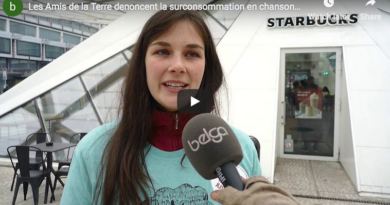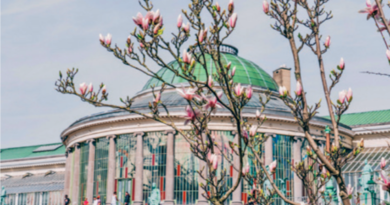Air pollution in Brussels
There were still too many diesel engines on the streets, but “car-free day” in Brussels last Sunday presented a vision of what life in the city could be like if fumes and emissions from transport were to be reduced. Air pollution is the single largest environmental health risk in Europe.
How does air quality in Brussels rank with the EU’s other capital cities? In 23 out of 28 EU member states, air quality standards are still not being satisfied – in total in over more than 130 cities across Europe. Unfortunately, this is also the case in Brussels. Brussels still faces levels of air pollution above the recommended European limit values.
One of the leading organisations in Belgium that is campaigning for cleaner air in the country is Clean Air Brussels. They remind us that every year 632 people die prematurely in Brussels because of unhealthy air, and that fine particle concentrations in Brussels are 80% higher than the WHO recommendations for our health. Air pollution in Brussels increases the risk of coronary heart disease by 45%.
Most air pollution in Brussels is caused by automobile traffic. The air pollution levels are well below the more polluted cities of the world, but they violate thresholds set by EU legislation, which according to the WHO are still too low to protect the health of our citizens. Very small particles (“fine particulate matter”) and nitrogen dioxide emissions are the most harmful to human health, and most of these come from the exhaust emissions of diesel car engines.
Air pollution can cause respiratory diseases, as it reduces the lung function and aggravates diseases like asthma, but it can also lead to lung cancer.
Clean Air Brussels estimates that air pollution in Belgium carries an annual cost of 17 billion Euros, or 6% of our GDP. This is a huge cost which could be better invested in clean technologies that would be beneficial to everyone.
The Brussels region does now have a plan to reduce air pollution. An Air-Energy-Climate Plan was adopted in 2016 with a view to reducing car emissions by limiting parking places, and creating a Low Emission Zone.
Low Emissions Zones are city areas where high-polluting cars are either forbidden to enter, or have to pay a charge. These policies can be strengthened by making cities safe for cycling and walking in order to cut traffic. Brussels plans to implement such a zone in 2018. Antwerp has already implemented a Low Emission Zone earlier this year, which requires diesel cars to pay a fee to enter the city centre.
Other strategies can help to clean up the city’s air, such as the accelerated decommissioning of diesel engine powered cars, the promotion of hybrid vehicles, electric cars, buses and freight transport that run on electric power or zero emission natural gas.
But as we wait for new policy initiatives to reduce transport emissions in the city, one huge bonus that the residents of Brussels can still enjoy is access to the “green lung” of the Sonian Forest, 4,421-hectares (10,920-acres) of woodland that comes right into the South-Eastern heart of the city.
The forest spreads over the southern part of Brabant right into Brussels. This year, the Sonian Forest was registered as a UNESCO World Heritage Site. The first mention of the forest dates from the early Middle Ages; at the start of the 19th century the area of the wood was still about 100 square kilometres, but due to wood cutting and development its area has diminished drastically to the current size of 44.21 km². It has also been criss-crossed by motorways that have carved it into sections.
The Forest was very extensive and served for a long period as an exclusive hunting ground for the nobility. Today it consists mainly of European beeches and oaks. Several trees are more than 200 years old,
Within the forest also lies the Tervuren Arboretum the planting of which dates back to 1902. The Arboretum is located in the “Kapbos” a beech forest planted between 1875 and 1880 at the Northeastern edge of the Sonian Forest, and covers an area of approximately 100 hectares. The Arboretum Collection includes some 460 different species including conifers and deciduous trees, mostly trees from temperate climates across the Northern Hemisphere including Sweetgum, Giant Sequoia, Cedar, Coastal Redwood, American and European Chestnuts.
A key international organisation campaigning for forestry practice and conservation in Europe to protect important habitats like the Sonian Forest, and to halt biodiversity loss is “Fern”. They argue that forest ecosystems are home to the largest number of species on our continent and provide important environmental functions, such as the conservation of biodiversity and the protection of water and soil.
The autumn season is a beautiful time of year to explore the rich diversity of the Sonian Forest, which is such an important asset to the citizens of Brussels. You will almost certainly see red squirrels which are highly active in collecting nuts and fruits at this time of year to hoard in their winter larders.
So please take time for a stroll this weekend to enjoy the fall colours of the beautiful woodlands on your doorstep, and reflect on what you can do to support organisations like “Clean Air Brussels” and “Fern”, and how to contribute to improving the quality of life in Brussels by making the city’s air cleaner, and the urban forests greener.



